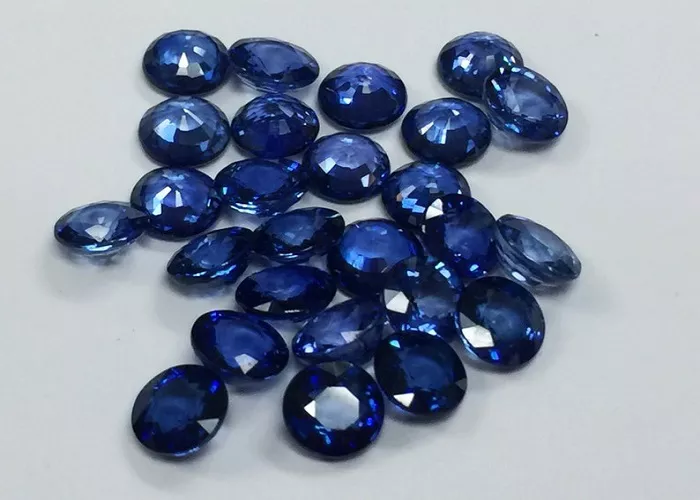Blue sapphires have long been cherished for their captivating beauty and symbolic significance. Among the myriad sources of this precious gemstone, Thailand stands out as a prominent origin, offering a rich history and unique characteristics that set Thai blue sapphires apart. This article delves into the origins, geological formation, characteristics, treatment methods, and market significance of Thai blue sapphires, providing a comprehensive overview for gemstone enthusiasts and collectors.
Historical Background
Thailand’s gemstone industry has a storied history that dates back centuries. The provinces of Chanthaburi and Kanchanaburi have been at the heart of this industry since the early 1900s. These regions are renowned for their deposits of blue sapphires and rubies, which have attracted gem traders and artisans from around the world. The Thai artisans’ expertise in cutting, heat treatment, and crafting gemstones has elevated the country to a global leader in the gemstone market.
Geological Origins
Thailand’s blue sapphires are primarily found in two key regions: Chanthaburi and Kanchanaburi. These sapphires are basalt-related, meaning they were formed deep beneath the Earth’s surface and brought to the surface by alkali basalts. Over time, the tropical climate of Thailand weathered these basalts, releasing the sapphires from their matrix and making them easier to mine.
The Bo-Phloi gemfield in Kanchanaburi, for instance, is one of the world’s significant sources of blue sapphires related to basaltic origin. However, due to resource depletion, the output from this area has become scarce in recent decades.
Characteristics of Thai Blue Sapphires
Color
Thai blue sapphires are known for their range of colors, from light blue to deep navy. The most valuable stones typically exhibit a vivid, medium-to-dark blue color with minimal zoning. The color variations are due to the presence of different trace elements, such as iron and titanium, which influence the hue and saturation.
Clarity and Inclusions
Like most sapphires, Thai blue sapphires often contain inclusions, which are tiny imperfections within the stone. Common inclusions include silk (rutile needles), clouds, fingerprints, and color banding. These inclusions can affect the stone’s clarity, but skilled gem cutters in Thailand are adept at minimizing their visibility, enhancing the overall appearance of the sapphire.
Cut
The cut of a sapphire is crucial in determining its brilliance and value. Thai artisans are renowned for their precision and expertise in cutting gemstones to maximize their beauty. A well-cut blue sapphire will have excellent symmetry and polish, allowing it to reflect light optimally and showcase its rich color.
Treatment Methods
Most Thai blue sapphires undergo heat treatment to enhance their color and clarity. This process involves heating the sapphire to high temperatures, which removes any undesirable hues and intensifies the natural blue color. Heat treatment is a widely accepted practice in the gem industry and does not diminish the stone’s value or beauty.
In some cases, sapphires might undergo additional treatments, such as beryllium diffusion, to further enhance their color. However, these treatments must be disclosed to buyers, as untreated sapphires are rare and command a higher price.
Market Significance
Thailand’s role in the global gemstone market extends beyond mining. The country is a major hub for cutting, treating, and trading sapphires from various origins, including Sri Lanka, Madagascar, and Myanmar. Bangkok, in particular, is renowned for its world-class cutting and polishing industry, advanced heat treatment techniques, and reputable gemological certification facilities.
The Bangkok Gems & Jewelry Fair is one of the world’s largest gem trade events, attracting buyers and sellers from across the globe. This well-established infrastructure and expertise make Thailand a trusted destination for high-quality gemstones.
How to Identify Authentic Thai Blue Sapphires
When purchasing a Thai blue sapphire, it is essential to seek certification from reputable labs such as the Gemological Institute of America (GIA) or the American Gem Society (AGS). These certifications verify the authenticity and treatment of the stone, ensuring that buyers receive the quality they expect.
Conclusion
Thai blue sapphires are highly valued for their rich history, unique characteristics, and the expertise of Thai artisans in cutting and treatment. With a wide range of colors, competitive pricing, and a strong reputation for quality, Thai blue sapphires offer an excellent choice for jewelry lovers and collectors. Whether you are seeking a deep, royal blue gemstone or a more affordable option, Thailand’s blue sapphires provide beauty and value that are hard to match.
Related Topics:


